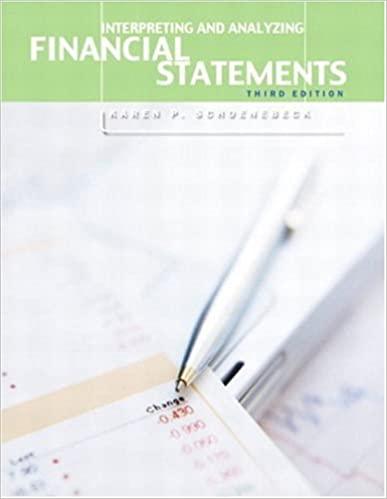Question
The following data were drawn from the records of Stuart Corporation. Planned volume for year (static budget) 4,100 units Standard direct materials cost per unit
The following data were drawn from the records of Stuart Corporation.
| Planned volume for year (static budget) | 4,100 | units | |||||
| Standard direct materials cost per unit | 3.00 | pounds | @ | $ | 1.60 | per pound | |
| Standard direct labor cost per unit | 2.80 | hours | @ | $ | 4.50 | per hour | |
| Total expected fixed overhead costs | $ | 15,580 | |||||
| Actual volume for the year (flexible budget) | 4,300 | units | |||||
| Actual direct materials cost per unit | 2.70 | pounds | @ | $ | 2.00 | per pound | |
| Actual direct labor cost per unit | 3.20 | hours | @ | $ | 4.20 | per hour | |
| Total actual fixed overhead costs | $ | 11,880 | |||||
Required
Prepare a materials variance information table showing the standard price, the actual price, the standard quantity, and the actual quantity.
Calculate the materials price and usage variances. Indicate whether the variances are favorable (F) or unfavorable (U).
Prepare a labor variance information table showing the standard price, the actual price, the standard hours, and the actual hours.
Calculate the labor price and usage variances. Indicate whether the variances are favorable (F) or unfavorable (U).
Calculate the predetermined overhead rate, assuming that Stuart uses the number of units as the allocation base.
Calculate the fixed cost spending variance. Indicate whether the variance is favorable (F) or unfavorable (U).
Calculate the fixed cost volume variance. Indicate whether the variance is favorable (F) or unfavorable (U).
Prepare a materials variance information table showing the standard price, the actual price, the standard quantity, and the actual quantity. (Round "Standard price" and "Actual price" to 2 decimal places.)
|
Calculate the materials price and usage variances. Indicate whether the variances are favorable (F) or unfavorable (U). (Select "None" if there is no effect (i.e., zero variance).)
| ||||||||||
Prepare a labor variance information table showing the standard price, the actual price, the standard hours, and the actual hours. (Round "Standard price" and "Actual price" to 2 decimal places.)
|
Calculate the labor price and usage variances. Indicate whether the variances are favorable (F) or unfavorable (U). (Select "None" if there is no effect (i.e., zero variance).)
|
Calculate the predetermined overhead rate, assuming that Stuart uses the number of units as the allocation base. Calculate the fixed cost spending variance and the fixed cost volume variance. Indicate whether the variance is favorable (F) or unfavorable (U). (Round "Predetermined overhead rate" answer to 2 decimal places. Select "None" if there is no effect (i.e., zero variance).)
show less
| |||||||||||||||||
Step by Step Solution
There are 3 Steps involved in it
Step: 1

Get Instant Access to Expert-Tailored Solutions
See step-by-step solutions with expert insights and AI powered tools for academic success
Step: 2

Step: 3

Ace Your Homework with AI
Get the answers you need in no time with our AI-driven, step-by-step assistance
Get Started


